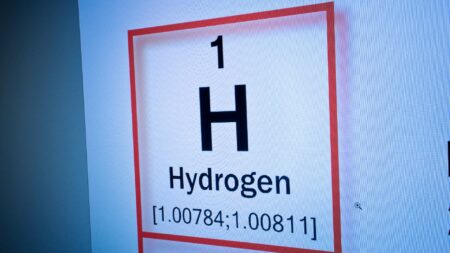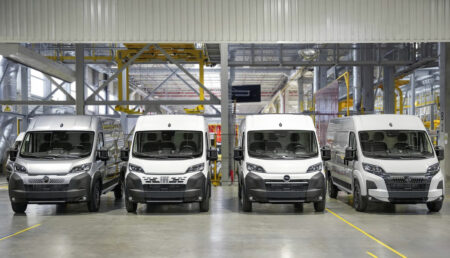Hydrogen, often touted as the universe’s most abundant element, is taking center stage in the battle against climate change. Countries worldwide are recognizing its potential as a clean energy carrier and are ramping up efforts to incorporate it into their energy strategies.
The United States, in particular, has made significant strides. The Infrastructure Investment and Jobs Act of 2021 allocated a staggering $9.5 billion for clean hydrogen projects, signaling a strong commitment to hydrogen-based solutions. Subsequently, the Inflation Reduction Act (IRA) in the following year introduced additional policies and incentives to bolster the hydrogen sector.
On the global stage, the European Union is driving hydrogen initiatives through programs like the Clean Hydrogen Partnership and the European Clean Hydrogen Alliance. Meanwhile, China has ambitious plans to put 50,000 hydrogen fuel cell vehicles on its roads by 2035 and utilize hydrogen for energy storage, electricity generation, and industrial applications. Overall, 25 countries worldwide have launched national hydrogen initiatives, showcasing a collective push toward hydrogen adoption.
Hydrogen: The Key to Decarbonization
At the heart of this hydrogen surge is a simple realization: green hydrogen, along with other clean fuels such as bioethanol, biodiesel, and e-ammonia, will play a pivotal role in the global transition to a low-carbon economy. These fuels are essential for decarbonizing industries still heavily reliant on fossil fuels. Hydrogen, in particular, is a versatile building block for achieving both economic sustainability and energy security.
Hydrogen is the most abundant element globally and is virtually omnipresent. However, its journey to becoming a mainstream energy source involves multiple phases and challenges.
One of the critical applications of hydrogen is in power generation. While renewable energy sources like wind and solar dominate new energy generation, there remains a need for dispatchable energy during periods of low renewable output. Natural gas has filled this role but is not carbon-free. Hydrogen offers a carbon-free alternative for power generation.
To enable this transition, new gas power plants must be equipped with hydrogen-ready gas turbines. These turbines can burn hydrogen blends and, ultimately, 100% hydrogen for emission-free energy generation. Leading industrial gas turbines capable of pure hydrogen operation, like Siemens Energy’s SGT-800 and SGT-400, are already on the horizon. Moreover, manufacturers aim to make all gas turbine frames 100% hydrogen-capable by 2030.
However, hydrogen-ready turbines alone won’t establish a robust hydrogen economy. Infrastructure remains a significant challenge. Production capacity for hydrogen is limited, resulting in high prices. Furthermore, most regions lack sufficient hydrogen pipelines, transportation capacity, and storage facilities. The permitting process for building hydrogen infrastructure is often complex and time-consuming, adding to the hurdles.
Nonetheless, pioneering hydrogen infrastructure projects are underway globally. In the United States, existing hydrogen infrastructure is set to expand, supported by significant federal investments. Plans include the development of six to ten clean hydrogen hubs, backed by up to $7 billion in government funding. These hubs will augment existing networks, such as the extensive U.S. Gulf Coast hydrogen pipeline, to facilitate hydrogen transportation.
The deployment of hydrogen infrastructure targets carbon-intensive industries that cannot readily transition to electrification. This includes heat generation in sectors like steel and cement. Innovative projects like Salcos aim to eliminate natural gas usage with green hydrogen. In the chemical industry, hydrogen replaces fossil feedstock, such as in methanol production.
Additionally, green hydrogen serves as a vital ingredient in synthetic fuels like e-kerosene, e-methanol, and e-gasoline, supporting the decarbonization of aviation, shipping, and heavy-road transport. Projects like Haru Oni in Chile, an industrial-scale hydrogen plant for synthetic climate-neutral fuels, exemplify these efforts.
A Cleaner Power Sector: Hydrogen in the Mix
As countries commit to decarbonizing their power sectors, the demand for hydrogen in power plants is set to rise. Many nations aim to achieve carbon neutrality, and gas-fired power plants will play a role in ensuring stable power supply during renewable energy fluctuations. To align with this transition, hydrogen-ready gas-fired power plants are essential.
The shift toward hydrogen-compatible turbines aligns with these goals. Notably, the U.S. Environmental Protection Agency (EPA) proposed regulations for nearly 100% hydrogen cofiring in the power sector by 2038. This regulatory push, coupled with market dynamics, is driving increased interest in hydrogen-capable turbines.
It’s important to recognize that not all hydrogen is created equal. Hydrogen comes in various colors, reflecting its production methods. Gray hydrogen, produced from fossil fuels without carbon capture, is the least environmentally friendly. Blue hydrogen, derived from fossil fuels with carbon capture and storage, represents a transitional phase. The future lies in green hydrogen, generated with zero CO2 emissions, typically through electrolysis powered by renewable energy.
The International Energy Agency predicts that blue and green hydrogen will coexist for years, with green hydrogen gaining competitiveness over time.
While the complete adoption of hydrogen may take time, it’s essential to fast-track its development. Small-scale projects, like Hyflexpower in France, have demonstrated the feasibility of cofiring hydrogen in power plants. Notably, Siemens Energy achieved a historic milestone by operating the world’s largest gas turbine on a 38% hydrogen blend.
As the world races toward decarbonization, hydrogen stands as a vital component of the clean energy puzzle. While progress may be gradual, today’s efforts lay the foundation for a hydrogen-powered future. The journey is just beginning, and hydrogen’s role in a carbon-free world is set to expand in the coming years.








